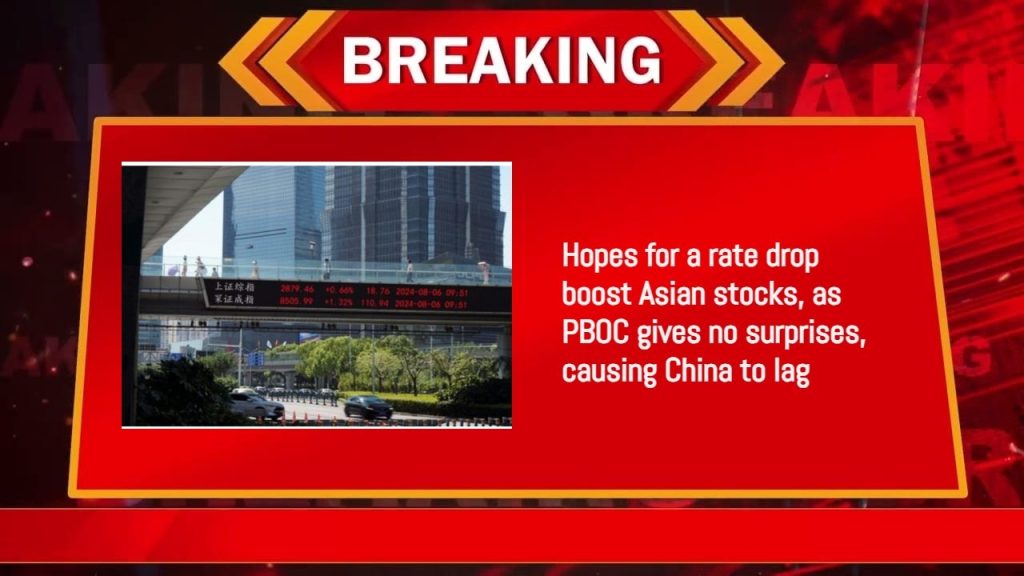Tuesday saw gains in the majority of Asian stocks, following Wall Street’s overnight surge as investors welcomed the possibility of a reduction in US interest rates ahead of Federal Reserve Chair Jerome Powell’s major speech later this week.
However, as the People’s Bank maintained its benchmark loan prime rate steady as anticipated, surprising some traders hoping for additional unexpected rate cuts from the central bank, Chinese markets lagged behind their regional counterparts.
US stock shows a growth
A strong lead-in from Wall Street helped other Asian markets rise as investors piled back into equities, particularly heavyweight technology sectors, as expectations of an interest rate decrease in September grew. In Asian trading, U.S. stock index futures saw a minor increase. This week, all eyes will be on Powell’s speech at the Jackson Hole Symposium on Friday.
There, he may give more hints about the bank’s intentions to start lowering interest rates. Asia’s top-performing stocks were Japanese, with the Nikkei 225 index hitting a three-week high and climbing 1.8%. TOPIX index increased by 1.2%.
A strong lead-in from Wall Street helped other Asian markets rise as investors piled back into equities, particularly heavyweight technology sectors, as expectations of an interest rate decrease in September grew. In Asian trading, U.S. stock index futures saw a minor increase.
This week, all eyes will be on Powell’s speech at the Jackson Hole Symposium on Friday. There, he may give more hints about the bank’s intentions to start lowering interest rates. Asia’s top-performing stocks were Japanese, with the Nikkei 225 index hitting a three-week high and climbing 1.8%. TOPIX index increased by 1.2%.
Gains in Australian markets were limited as the minutes of the Reserve Bank of Australia’s August meeting showed that the bank had considered a rate hike, amid concerns over sticky inflation.
China’s Equity Declines
The Reserve Bank of Australia’s August meeting minutes revealed that the bank had discussed raising interest rates due to concerns over sticky inflation, which restrained market gains in Australia. The RBA also made a signal that rates will remain high for an extended period of time, which is not good news for Australian markets.
Given their significant trade exposure to China, Australian stocks were also negatively impacted by the likelihood of slow economic development in China. While the PBOC maintains rates, China equities decline.
Following the People’s Bank of China’s decision to maintain its benchmark lending prime rate, Chinese markets underperformed relative to their global counterparts, aborting a six-month rally. Hong Kong’s Hang Seng index fell 0.3%, while the Shanghai Shenzhen CSI 300 and Shanghai Composite indices lost 0.6% and 0.8%, respectively.
As anticipated, the PBOC maintained the same lending prime rate. However, some traders who were hoping for additional rate reductions in the nation were nonetheless let down by the decision, particularly in light of the central bank’s surprise rate cut in July.
Even while consumer spending and inflation in China improved somewhat in July according to latest economic data, ongoing worries over the country’s faltering economy harmed public perception of it overall.

